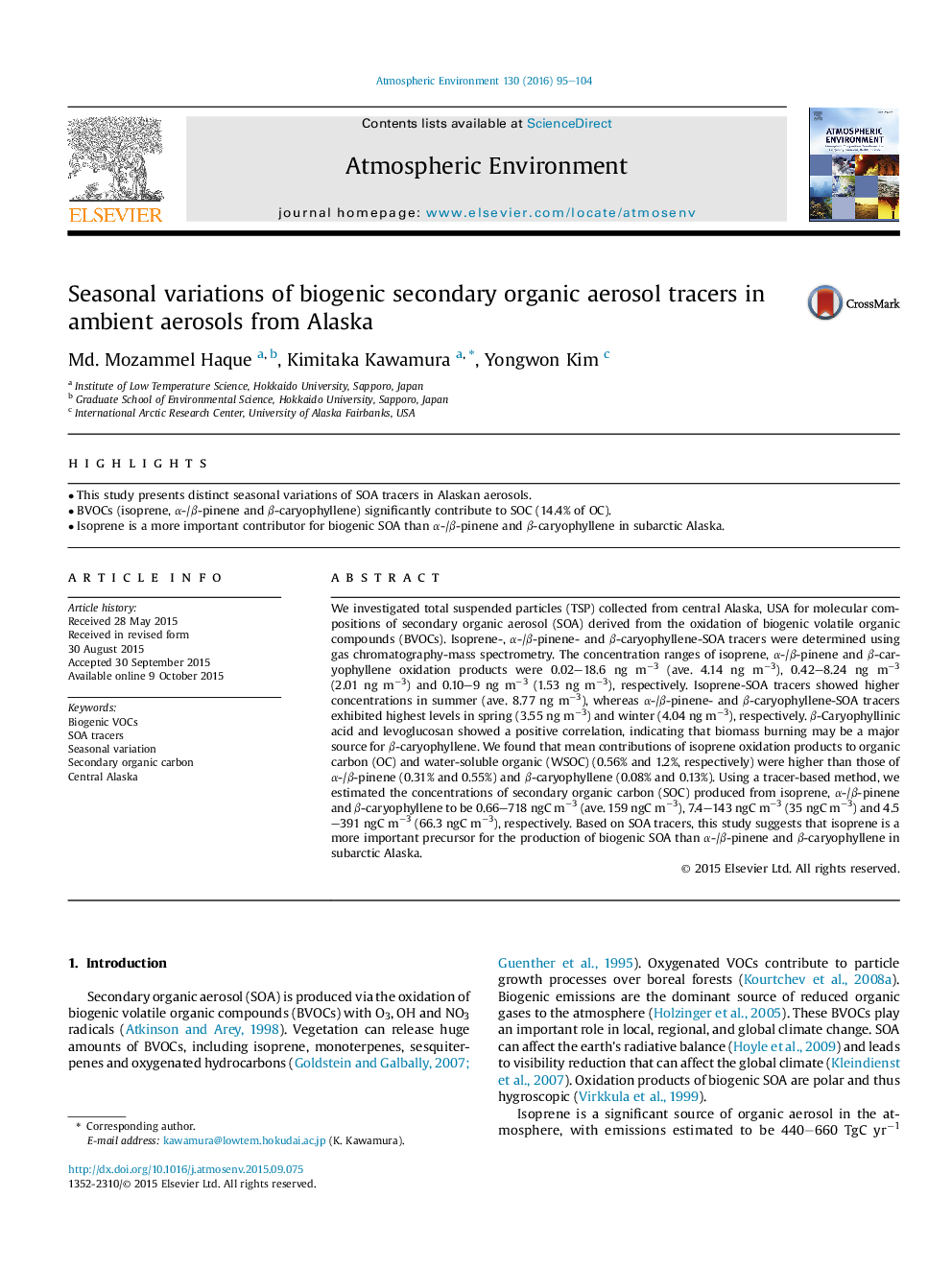| Article ID | Journal | Published Year | Pages | File Type |
|---|---|---|---|---|
| 6336619 | Atmospheric Environment | 2016 | 10 Pages |
Abstract
We investigated total suspended particles (TSP) collected from central Alaska, USA for molecular compositions of secondary organic aerosol (SOA) derived from the oxidation of biogenic volatile organic compounds (BVOCs). Isoprene-, α-/β-pinene- and β-caryophyllene-SOA tracers were determined using gas chromatography-mass spectrometry. The concentration ranges of isoprene, α-/β-pinene and β-caryophyllene oxidation products were 0.02-18.6 ng mâ3 (ave. 4.14 ng mâ3), 0.42-8.24 ng mâ3 (2.01 ng mâ3) and 0.10-9 ng mâ3 (1.53 ng mâ3), respectively. Isoprene-SOA tracers showed higher concentrations in summer (ave. 8.77 ng mâ3), whereas α-/β-pinene- and β-caryophyllene-SOA tracers exhibited highest levels in spring (3.55 ng mâ3) and winter (4.04 ng mâ3), respectively. β-Caryophyllinic acid and levoglucosan showed a positive correlation, indicating that biomass burning may be a major source for β-caryophyllene. We found that mean contributions of isoprene oxidation products to organic carbon (OC) and water-soluble organic (WSOC) (0.56% and 1.2%, respectively) were higher than those of α-/β-pinene (0.31% and 0.55%) and β-caryophyllene (0.08% and 0.13%). Using a tracer-based method, we estimated the concentrations of secondary organic carbon (SOC) produced from isoprene, α-/β-pinene and β-caryophyllene to be 0.66-718 ngC mâ3 (ave. 159 ngC mâ3), 7.4-143 ngC mâ3 (35 ngC mâ3) and 4.5-391 ngC mâ3 (66.3 ngC mâ3), respectively. Based on SOA tracers, this study suggests that isoprene is a more important precursor for the production of biogenic SOA than α-/β-pinene and β-caryophyllene in subarctic Alaska.
Related Topics
Physical Sciences and Engineering
Earth and Planetary Sciences
Atmospheric Science
Authors
Md. Mozammel Haque, Kimitaka Kawamura, Yongwon Kim,
